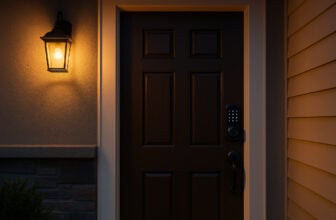At the beginning of a lease, most landlords make it mandatory for renters to pay security deposits. Depending on the terms of the transaction, the security deposit may be a refundable or nonrefundable payment that serves as a security in case of property damage or loss, explains Orca Realty.
When tenants want to move out, they walk through the property with the landlord and inspect for damages that are not the usual wear and tear. The inspection also entails looking for illegal alterations and changes forbidden by the lease agreement.
During this process, the present state of the property is compared with how it was before the renter moved in. Such comparisons may be made by comparing pictures or videos.
Depending on the extent of damage, the landlord may decide to reduce the amount of security deposit that will be refunded. Sometimes, the landlord may choose to provide the tenant with a list of damages that were discovered during the inspection and allow them to perform the repairs.
Where tenants cannot do this, the landlord will withdraw from the security deposit for this purpose. This process benefits landlords because they get to perform the necessary repairs before leasing the property to a new renter.
Tenants also benefit from the move-out inspection because they can track and evaluate any damage, which helps them understand what charges the landlord deducts from their security deposit.
Can landlords perform a move-out inspection in the absence of the tenant?

The simple answer to this question is “Yes”.
Landlords may perform a move-out inspection if the tenant is unavailable. Renters who are unavoidably absent or do not wish to participate can give the keys and necessary materials to the landlord before moving out.
However, such tenants are liable to pay extra fees if they are not present to debate normal wear and tear that may be included as damages. Move-out inspections should be a shared effort involving the presence of both the landlord and tenant.
How to prepare for a move-out inspection
Landlords and tenants have to do certain things before the move-out inspection. They both need to agree on a convenient date and time. The landlord will notify the tenant a few days before the inspection. Different states have variable durations for this notice. Confirm with the prevailing regulations for your location.
Landlords should inform tenants why they intend to do the move-out inspection and how it will benefit them. Landlords and tenants should retrieve old photos and videos of the property they took at the onset of the lease. The landlord should also prepare to take new pictures or videos if damages are discovered. That will serve as evidence for the deductions.
Renters may decide to deep clean the property before the inspection. Doing so will prevent the landlord from deducting the security deposit for cleaning. Where applicable, renters may choose to perform repairs before the inspection.
Renters’ checklist before the move-out inspection

As a tenant who wants to get your security deposit in full, below is a sample checklist you can follow:
- Deep clean the entire rental unit and the exterior
- Wash and vacuum all carpets
- Remove all your belongings
- Declutter the property and leave no dirt behind
- Clean and repaint the walls with the same color before tenancy, except if you had approval from the landlord
- The plumbing system should be functional and free of blockages or leaks
- Ensure that all lighting fixtures are functional
- The carbon monoxide and smoke alarms should be functional
- All utilities should be on during the move-out inspection
- Ensure that the HVAC system is working
- All kitchen appliances should be functional
- The electricity system should work properly
- Inform the landlord of any damage in the rental unit
- Return all keys during the move-out inspection
Landlord’s checklist for move-out inspection
After informing the tenant and scheduling a move-out inspection, prepare your checklist and retrieve pictures or videos taken before the lease. Failure to have a checklist can make you forget to look at some essential aspects of your property. Below are some areas you should include in your checklist:
- Exterior: Walls (note paint color and new installations), lawn, doors, and windows.
- The living room and bedroom include walls, ceilings, floors, carpet, HVAC, electricity, appliances, attic, basement, crawlspaces, etc.
- Kitchen: Stove, dishwasher, pipes, sinks, pantry, washing machine, microwave, refrigerator, exhaust fans, etc. Ensure to check behind and under your appliances.
- Bathroom: walls, floors, ceilings, bathtubs, sinks, faucets, pipes, mirrors, carpets, exhaust fans, curtains, toilet, etc.
- Ensure that you test the functionality of your carbon monoxide alarm, fire alarm, and all your appliances.
Landlords and tenants know that properties experience normal wear and tear. Both parties should be able to differentiate normal wear and tear from excessive property damage. If deductions are made from the security deposit, landlords should send tenants an itemized list of damaged items and the remaining money (where applicable).





